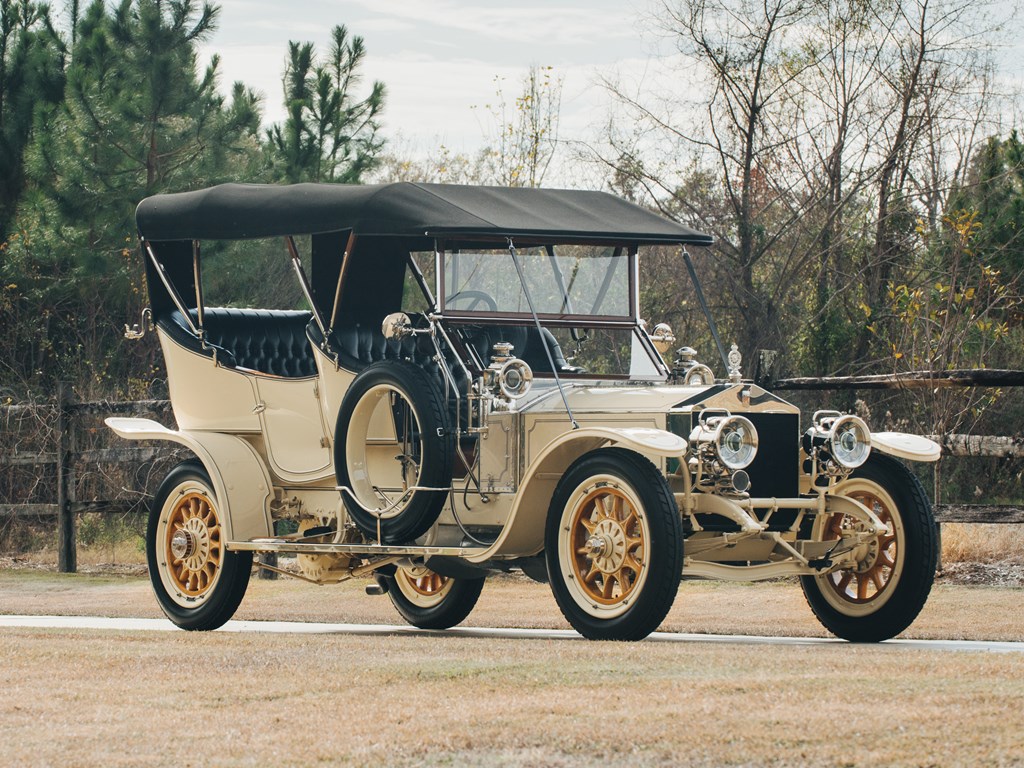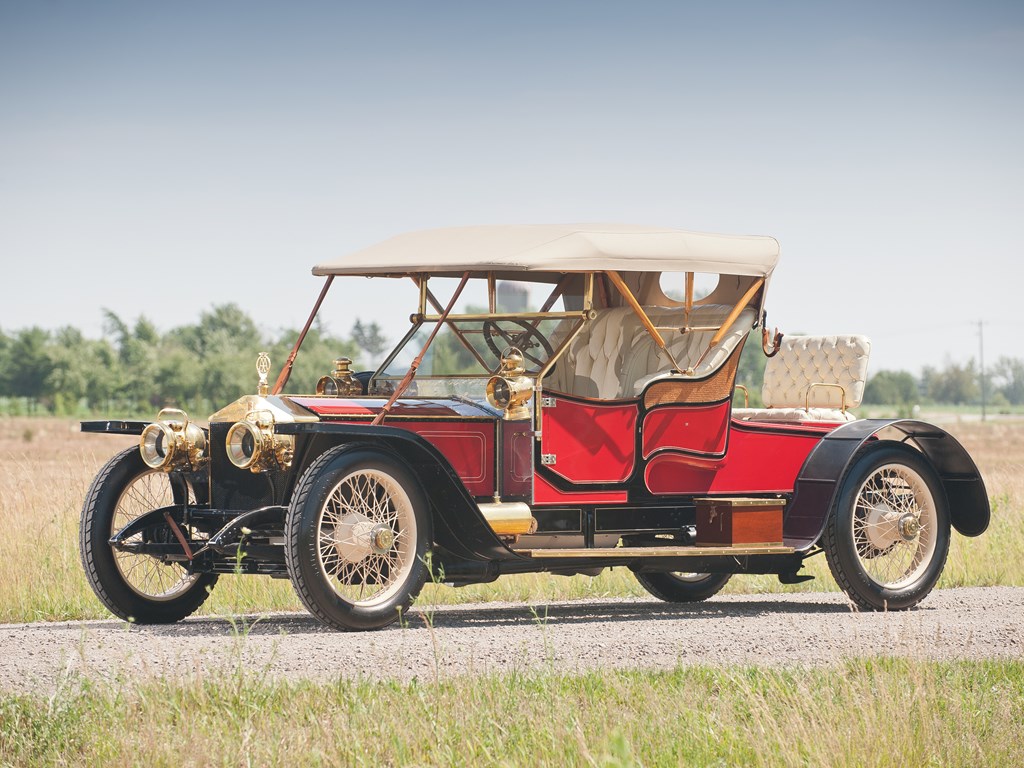Media | Articles
Rolls-Royce Silver Ghost: Greatest car of the 1910s
As Classic Car Appreciation Day (July 13) approaches, we’ll be counting down each day with the greatest vehicle of each decade, from the earliest days of the automobile to the present. It’s by no means a final, definitive, for-all-time list, so please weigh in—respectfully—in the Forums with your comments, endorsements, and disagreements. Today: the 1910s.
The Rolls-Royce Silver Ghost was introduced in December 1906 at the Olympia Show as the 40/50 just two years after the partnership between “mechanic” Henry Royce and “promoter” Charles Steward Rolls began. Deliveries of chassis for custom bodywork, which was the norm for Rolls-Royce cars until after WWII, began about nine months later.
Technically, only one car, chassis number 13, was given the appellation Silver Ghost by Rolls-Royce when constructed in 1907. Interestingly, however, the fame of the car became such that the entirety of production soon bore that name. In fact, this car line continued on and was hand-fabricated all the way through 1926, virtually as long as its polar opposite, the Ford Model T.

Unlike the T, Rolls-Royce production was miniscule; a mere 8000 cars, with just over 1700 of same being manufactured in Springfield, Massachusetts, starting in 1921, priced at $11,750 for the chassis alone. That equates to $149,312 in today’s money. A body for the chassis could potentially have cost the same amount, or more. The British chassis was fractionally more expensive even yet.
Marketplace
Buy and sell classics with confidence
With the 40/50, Royce successfully developed an inline six cylinder engine which was smooth and quiet that paired the third and fourth pistons on the same crank throw, a system soon adopted by all other manufacturers of such engines.
Improvements of the breed commenced virtually immediately, with the engine increased in displacement in 1909 along with wire wheels and a new gearbox, and yet another new gearbox in 1913. A Lanchester-type engine damper was added in 1911, improved brakes in 1913 and 1924, with the latter being mechanically boosted power assisted brakes on four wheels. An even quieter spiral bevel rear axle was adopted in 1923, and new suspension dampers in 1924.

Due to the vibration-free operation, and quality of construction, the Silver Ghost, or 40/50, was quite rightly renowned for durability and became the bedrock on which Rolls-Royce constructed its enviable reputation.
After a disastrous experiment with a very light V-8-powered town-car in 1906, Royce eschewed anything except pure convention, so it was never a design or engineering leader, especially as the decades rolled on.
However, the 40/50 became known as the best-crafted, most carefully tested car in the world. The silence of operation and grand size gave it a dignity few others possessed. And being so expensive to purchase, it was enjoyed primarily by the few who enjoyed the finest things in life then available. Many automotive historians consider the Silver Ghost to be the most famous car ever made, full stop—mic drop—walk away.

Honorable mention:
American Motors Company “underslung” cars: These advanced cars obtained their name literally due to the frame being below the axles, giving the cars a low center of gravity and appearance without sacrificing critical ground clearance, given the deplorable state of the roads in that era. This American Motors Company lasted until 1914 and had no relation ot the later American Motors Corporation of Wisconsin.
Packard Twin Six: Introduced in 1916, one of the first-ever V-12 automobiles, this car was first with aluminum pistons—a hugely important advance. Retail prices began at an incredibly reasonable $2600, considering its gravitas, dignity, and luxury of so many pistons.
1912 Cadillac: Electric start, developed by General Motors, revolutionized the automotive industry by allowing many more less physically able drivers to drive something other than electric cars, as well as removing the danger of crank starts.











Please help me identify this 1910 Rolls Royce 40/50 Silver Ghost diecast Model built by the Rolls Royce company in 1909 for sales promotion and display. My wife’s grandfather acquired this model in Argentina in 1958. It is completely made of brass and plated parts with Nickel. It has cut industrial diamonds for headlamps and a cut ruby for the taillight. It is a completely operational model. I have pictures which speak a thousand words. Please help e!